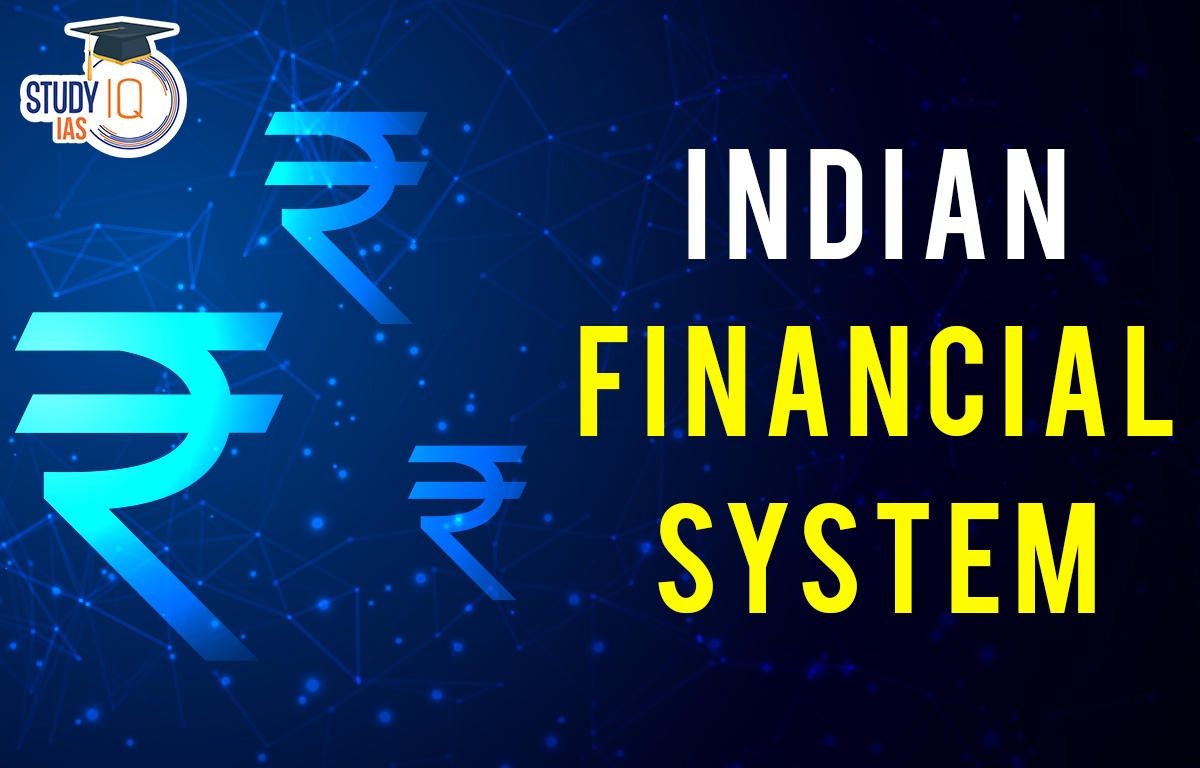Table of Contents
Indian Financial System
The Indian financial system is a complex network of financial institutions, markets, instruments, and services that facilitate the flow of funds between savers and investors. It comprises of various entities such as banks, non-banking financial companies (NBFCs), insurance companies, stock exchanges, mutual funds, pension funds, and other financial intermediaries.
The Indian Financial System plays a crucial role in mobilizing savings, allocating capital, and facilitating economic growth and development in the country.
Read about: List of RBI Governors of India
Indian Financial System Structure
The Indian Financial System is made up of various components that work together to facilitate the flow of funds between savers and investors. The structure of the Indian financial system can be broadly divided into two parts: the organized sector and the unorganized sector.
The organized sector includes formal financial institutions such as banks, insurance companies, NBFCs, mutual funds, stock exchanges, and pension funds. These institutions are regulated by the Reserve Bank of India (RBI) and other regulatory bodies such as the Securities and Exchange Board of India (SEBI), the Insurance Regulatory and Development Authority of India (IRDAI), and the Pension Fund Regulatory and Development Authority (PFRDA).
The unorganized sector, on the other hand, includes informal financial intermediaries such as moneylenders, chit funds, and other unregulated entities that cater to the financial needs of the unbanked and underserved sections of society.
Read about: Finance Ministers of India List
Indian Financial System Components
The Indian Financial System is composed of various components, including:
| S. No | Components of Indian Financial System | Description |
| 1. | Banks | Banks are financial institutions that accept deposits from customers and provide loans and other financial services. In India, banks can be classified into public sector banks, private sector banks, and foreign banks. |
| 2. | Non-Banking Financial Companies (NBFCs) | NBFCs are financial institutions that provide banking services without holding a banking license. They offer a wide range of financial services, such as loans, leasing, hire purchase, and investment advisory services. |
| 3. | Insurance Companies | Insurance companies offer a range of life and non-life insurance products, including health insurance, motor insurance, and property insurance. They are regulated by the Insurance Regulatory and Development Authority of India (IRDAI). |
| 4. | Capital Markets | The capital markets in India comprise the stock exchanges, such as the Bombay Stock Exchange (BSE) and the National Stock Exchange (NSE), and other capital markets intermediaries such as brokers, depositories, and registrars. They provide a platform for companies to raise capital through the issuance of equity and debt instruments. |
| 5. | Mutual Funds | Mutual funds are investment vehicles that pool money from various investors and invest in a diversified portfolio of stocks, bonds, and other securities. They are regulated by the Securities and Exchange Board of India (SEBI). |
| 6. | Pension Funds | Pension funds in India offer retirement solutions to individuals and are regulated by the Pension Fund Regulatory and Development Authority of India (PFRDA). |
Read about: India’s GDP Growth Rate
Indian Financial System Code
The Indian financial system is governed by various laws, regulations, and codes issued by different regulatory bodies. For example, the Reserve Bank of India Act, of 1934 governs the functioning of the Reserve Bank of India, while the Securities and Exchange Board of India (SEBI) Act, of 1992 regulates the securities market in India. There have been proposals in the past to introduce a comprehensive financial code, but they are still in the drafting stages and have not been implemented yet.
Read about: GDP of Indian States
Indian Financial System Functions
The Indian financial system has several functions that help to meet the financial needs of individuals and businesses. Here are some of the key functions of the Indian financial system:
- Mobilization of Savings: The Indian financial system helps to mobilize savings from various sectors of the economy and channel them towards productive investments. This is achieved through various financial intermediaries such as banks, mutual funds, and insurance companies.
- Allocation of Credit: The Indian financial system also plays a key role in allocating credit to different sectors of the economy. Banks and other financial institutions provide loans and credit facilities to businesses and individuals to help them meet their financial needs.
- Payment System: The financial system provides a safe and efficient payment mechanism to facilitate transactions between different individuals and businesses. This is achieved through various payment systems such as NEFT, RTGS, and IMPS.
- Risk Management: The financial system helps to manage risks associated with financial transactions. Financial intermediaries such as insurance companies provide risk management products such as life insurance, health insurance, and property insurance.
- Price Discovery: The Indian financial system also helps in the discovery of prices of financial assets such as stocks, bonds, and commodities. This is achieved through various financial intermediaries such as stock exchanges and commodity exchanges.
- Economic Development: The financial system plays a critical role in the economic development of the country. It provides financial resources for investment in infrastructure, industries, and other productive sectors of the economy.
- Financial Inclusion: The Indian financial system also strives to promote financial inclusion by providing access to financial services to individuals and businesses in remote and underdeveloped areas of the country.
Read about: Government Schemes
Indian Financial System UPSC
The Indian financial system is an important topic for the UPSC exam as it is a critical component of the Indian economy. Knowledge of the Indian financial system is a part of the UPSC Syllabus and is frequently tested in the exam. It is also a key topic covered by StudyIQ UPSC Online Coaching and is included in UPSC Mock Test. Understanding the structure and functions of the Indian financial system is essential for aspirants to score well in the economics and finance-related sections of the UPSC exam.
Read about: Index Ranking of India 2022





















 WhatsApp
WhatsApp